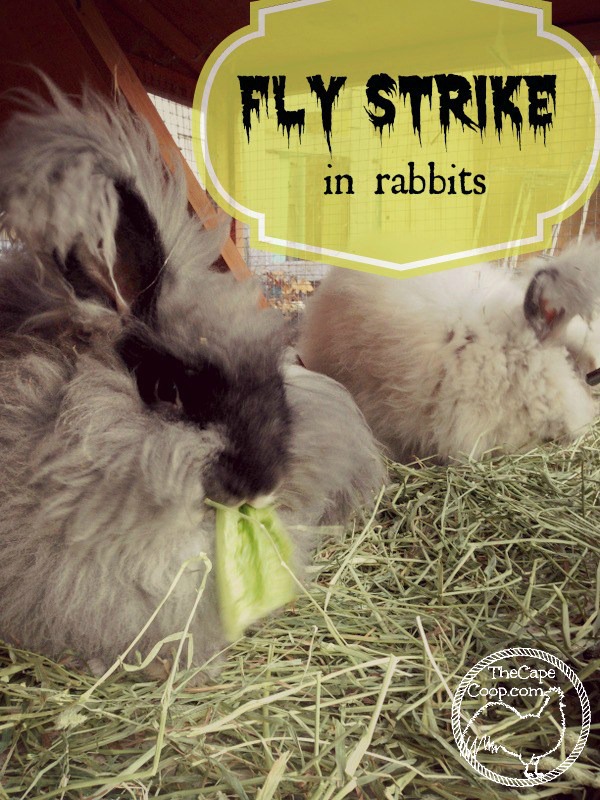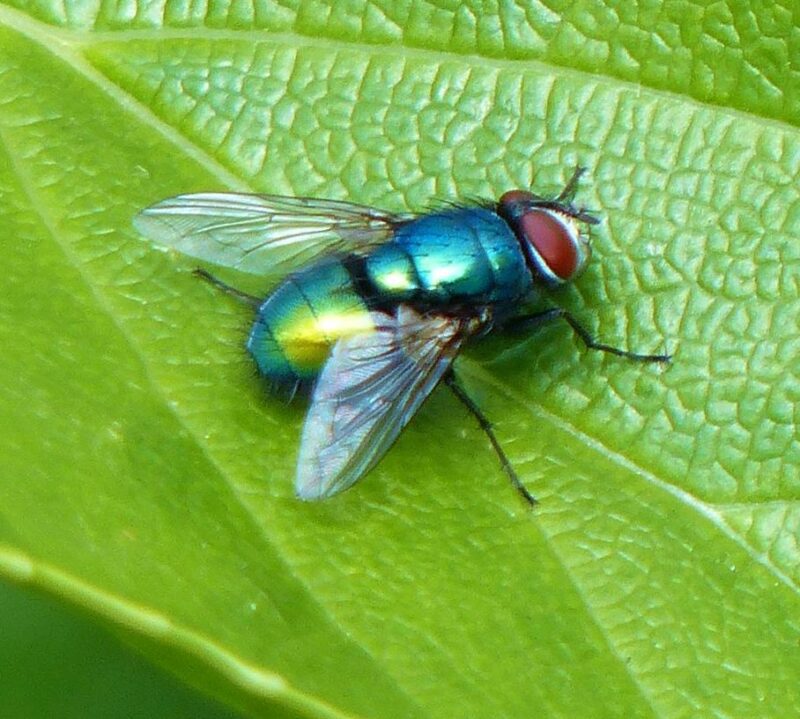---------------------------------------------------------
Fly Strike is a potentially fatal condition all rabbit owners should be on the lookout for during warmer months. Fly Strike can affect any animal – chickens, dogs, cows, even humans, but it is most often seen in rabbits and sheep.
What is Fly Strike?
This condition is a fast-moving affliction caused by the green bottle fly (and some of its other fly relatives). The fly will lay up to 200 eggs on the rabbit’s skin, usually near her rear end. Within a few hours, the eggs will hatch into maggots which will borrow into the rabbit’s flesh literally eating the rabbit alive.
What rabbits are at risk?
All rabbits are at risk, even ones that live inside. It only takes one stray fly that sneaks in through a broken screen or open door. Obviously, rabbits that live outdoors or that spend time outdoors will have more opportunities for infestations.
The flies are attracted to moisture, warmth, and smell. Rabbits with open sores or with urine or feces-soaked fur will be at the highest risk. Older, overweight, or disabled rabbits that have a hard time cleaning themselves will be at high risk. Angora rabbits with their long fur are more likely to have lingering dampness in their fur from either spilled drinking water or urine so should be monitored frequently.
What symptoms should you look for?
Infested rabbits will be listless or restless or may be in obvious discomfort or itchy. Severe cases will send the rabbit into shock and they may experience seizures. To see the maggots in the early stages, you will need to part the fur to be able to get down to inspect the skin. As they eat away the flesh, the sore will get larger and larger though.
How can fly strike be prevented?
Check your rabbit’s bottom daily during the warmer spring & summer months to catch any potential infestations early. The rabbit’s dewlap should also be inspected (especially in rabbits with large dewlaps) as they could get wet while they are drinking.
Try to minimize flies in your rabbit’s living areas. Clean away soiled litter on a daily basis and disinfect the cage/hutch weekly. Hang fly strips or fly traps (out of rabbit’s reach!). Consider growing insect-repelling plants nearby, some to try include peppermint, lavender, rosemary, and oregano. Keep the fur near her bottom short so it will be easier for your rabbit to keep clean. If you need to bathe her, be sure to dry her thoroughly. Ensure she is getting the proper nutrition to keep her digestive system running properly to minimize diarrhea.
for more tips on reducing flies click here
What should you do if you find maggots?
You can try to remove the maggots yourself with tweezers, but it will likely be impossible for you to get them all in one sitting. Rinse the wound under running water and remove all the maggots you can find. There will likely be several stages in the wound – some large, some super tiny. After removing as many as you can see, dry the rabbit. Try again in a couple of hours. Maggots grow very quickly so in a couple of hours any microscopic ones will have grown large enough to see.
I would recommend a call to your vet immediately. Rabbits can die within hours, especially if the infestation is severe so this could be truly a medical emergency. Your vet will ensure all the maggots are removed, the area will be shaved, cleaned, and disinfected and pain medication & anti parasitic medication will be administered.









Renee LaBute
Friday 13th of March 2020
I a rex rabbit that suffered from this. She was only 4 years old and in good health. It may have been the rex coat that made her susceptible (?) The fly laid eggs in the crease between her back and her tail. That area should be checked too! It was hard to see it because it was covered by her tail.
Liz
Sunday 15th of March 2020
Aww poor little girl - excellent advice, they always seem to find those hard to see spots